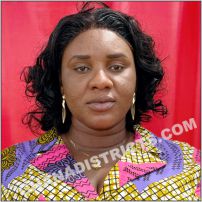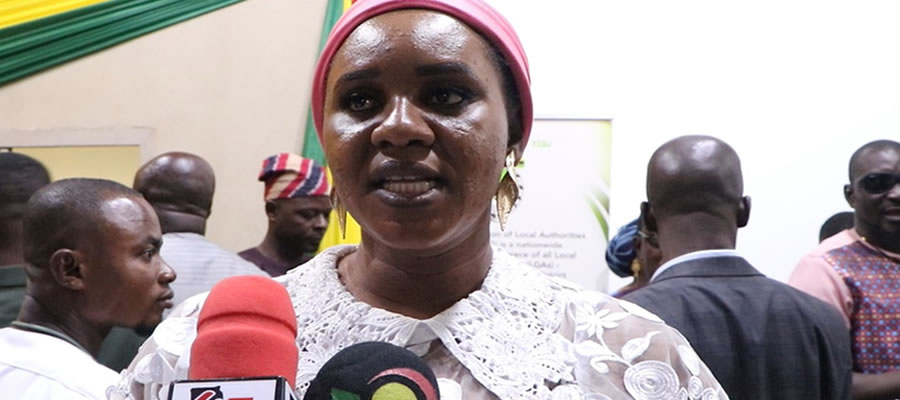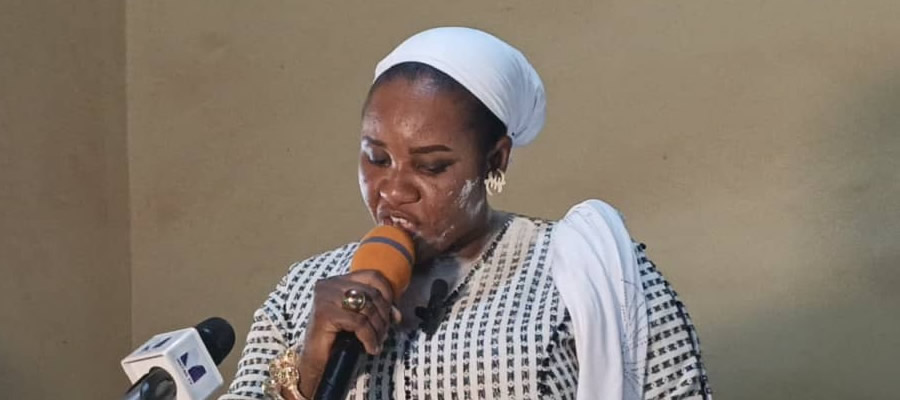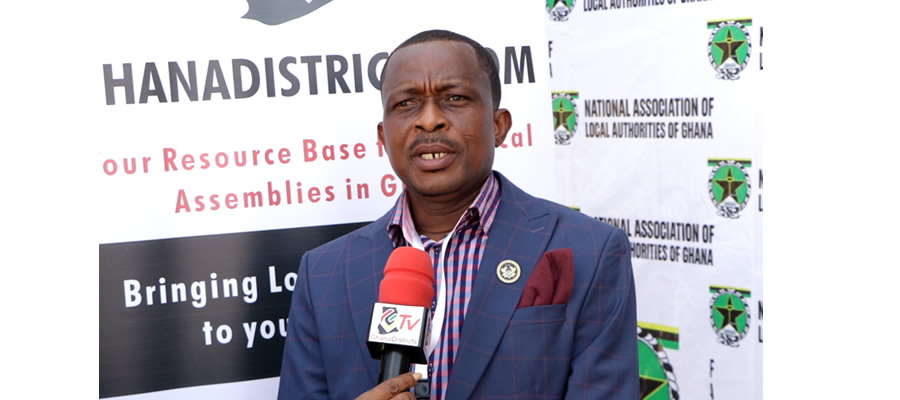

Governance refers to that process of decision making and the process by which these decisions are implemented. The concept is applied in many contexts such as corporate governance, international governance, national governance and local governance. The major characteristics of good governance include: participation, consensus building, transparency, responsiveness, effectiveness and efficiency, equity and inclusiveness, reduction in corruption, transparency and accountability and say of both majority and minority groups.
The development process of the Municipality is reinforced on the various institutional set-ups which include traditional governance structures, the private sector, state institutions, nongovernmental organizations and community/faith based organizations.
Under the Local Government Act, 2016 (Act 936) the Jaman South Municipal Assembly, established by Legislative Instrument (LI) 1777 of 2004 as the highest political administrative and planning authority at the Municipal level and with the sole responsibility of governing and developing of the entire District. Under the Act, the Assembly has deliberative, legislative and executive functions, which empowers it to discharge its socio-economic development mandate to the people.
Composition of the District Assembly
The District Assembly is made up of the following:
i. The District Chief Executive
ii. 59 Assembly members, made up of 39 elected by universal adult suffrage and 20 other members appointed by Government in line with the Local Government Act 462, which requires the Government to appoint 30% of the elected Assembly members in consultation with interest groups.
iii. The Member of Parliament in the District.
The District Chief Executive, who represents the Central Government in the District, chairs the Executive Committee which is responsible for the execution of administrative and executive functions of the District Assembly. The Executive Committee of the Assembly has a number of sub-committees performing various functions. These include:
- Finance and Administration Sub-committee
- Works Sub-committee
- Social Services Sub-committee
- Development Planning Sub-committee
- Justice and Security Sub-committee
- Agric and Fishery Sub-committee
- Public Relations and complaints committee
The sub-committees have deliberative functions and submit results of their deliberations to the Executive Committee for action and steps to be taken. Actions taken are submitted /forwarded to the General Assembly for ratification, approval and implementation.
In addition to the above is the District Planning Co-ordinating Unit (DPCU) which serves as the technical wing of the District Assembly. It is composed of key units and departmental heads chaired by the District Co-ordinating Director. Currently, the membership of the DPCU stands at 21 in the District. They include; the DCD, DPO, DFO, DBA, DWE, PPD DDH,
DDE, DDA, Community Dev/ Social Welfare Officer, and a member of the District Assembly. The district lacks the departments of Feeder Roads and hence depends on Berekum Municipal Assembly for such services
On the other decentralized departments of the Assembly as captured under Act, 462 are presented in the table below. These include the first schedule Departments of the Local Government and those that ceased to exist under the Local Government Service Act, 2003, Act 656.
In the performances of the functions assigned to the District under the Act, the Assembly is beset with numerous challenges including:
• Inadequate office accommodation for Decentralized Departments
• Inadequate financial and technical logistics for monitoring and evaluation data management
• Inadequate qualified personnel in some departments
Figure 1.9: below shows the existing organizational structure of the JSMA
Sub-district Structures of the Assembly
Underneath the District Assembly are the Sub-district Structures established under Legislative Instruments 1589 (LI 1589) in response to the demand for popular participation in promoting decentralization and good governance.
The Assembly is subdivided into (190) Unit Committees in thirty-nine (39) Electoral Areas grouped into Six (6) Area Councils and two (2) Town Councils. These include:
• Drobo Urban Council
• Japekrom Town Council
• Adamsu Area Council
• Zezera Area Council
• Kwamesiekrom Area Council
• Jenjemireja (JJMJ) Area Council
• AtunaArea Council
• Dwenem Area Council
Notwithstanding their crucial role of these sub-district structures in the local level development, their activities are virtually not in existence. Factors such as poor financial, weak logistics, lack of office accommodation and human resources capacity constitute the major challenges at their level. Despite the fact that some of the staffs have ever been trained on their duties and functions by the District Assembly, they still lack vital refresher training. They need to be trained and assisted to identify their needs and assisted to prepare a development plans.
Traditional Authority
The District has three paramountcies namely: Drobo, Japekrom and Dwenem paramountcies. All of them have their sub chiefs working to safeguard peace and tranquility in the District. The cordial relationship between the traditional authorities and the Assembly would be harnessed for the development of the district. The traditional authorities should partner the Assembly to provide the needed economic and social transformation for the people.
Social Accountability
Active involvement of all stakeholders (individuals, beneficiary communities of a project, donors etc.) in the formulation of development policies is of much importance to Assembly. Citizens participation in community level decision-making can be traced back to some centuries ago, where the concepts of freedom of speech, Assembly, voting and equal representation were pioneered. Citizen participation therefore is the essence of democracy.
Citizenry Participation in Community Development/Decision Making
The level of citizen’s participation in the district varies with respects to the subject matter and also a number of factors like the benefits to be gained (immediate or future) from the issue under discussions, the availability of appropriate mechanism that allows community members to participate in issues that concern them and their political and religious affiliations. Generally however, there is lot of indiscipline and poor citizenry attitude to communal labour which account for lot of fil the consuming the district. These include polythene bags, open defecation, indiscriminate disposal of refuse and waste water. The DA would have to do lot of public education to change people’s behaviour towards sanitation and also enforce its bylaws for compliance.
Role of Non-Governmental/Civil Society Organizations
The role of Non-governmental and civil society organizations in the development of the District cannot be overemphasis. The level of participation by these stakeholders clearly shows that there is good collaboration, partnership and information flow between the Assembly and the Stakeholders. To ensure true ownership and sustainability in the District development agenda it is necessary to create the enabling environment for stakeholders and interested groups to effectively contribute to the development process. The Assembly must therefore institute channels for consultation with key stakeholders at the District, Area and community levels.
SOCIAL SERVICES
Social services are deliberated interventions provided by the state with intention of enhancing the citizenry general well-being and social welfare. These include education, health delivery as well as water and sanitation provision. All these services are being provided within the Municipality.
Security Situation of the District
Peace is a necessary ingredient for development. In an environment of peace and tranquillity community members, market women and other business organizations will strive. However, information from the District Police Headquarters reveals an increase in the incidence of crime over the past years. The most prominent among crimes reported to the police station include assault, stealing, etc.
There is therefore the need to strengthen the District police force through increased staff strength and the provision of adequate logistical support to arrest the emerging crime situation in the district. Also, adequate streetlight must be provided in public places in the Municipality.
The Ghana Fire Service
There is only one fire station manned by 25 staff (Male=17and Female=8) in the district, whose major responsibility is to combat fire out breaks and resource operation when accidents occur. The Municipality also took delivery of a modern fire tender in 2012, which aids the activities of the unit. At the moment the sector has citizen’s ratio of 1: 3860. The service currently lacks the needed financial and logistical support to effectively execute their functions.
The Police Service
The maintenance of law and order in the Municipality is the sole responsibility of the Ghana Police service. However, in the discharge of their duty they collaborate with District Security Committee, Traditional Authorities and other security agencies like Ghana Prison Service, Bureau of National Investigations, The Navy and the Ghana National Fire Service to ensure that life and property are secured.
At the moment, the Municipality has 2 major police stations with total staff strength of 69. With an estimated population of 106,968 in 2017, the police citizen ratio is 1: 1,546 compared to the national figures of 1:953. This calls for some efforts from stakeholders to increase the staff strength to enhance regular patrols citizens’ security within the Municipality.
Disaster Prevention and Management
Hazard and Disaster, such as fire, flooding, earthquake, storm, drought etc. should be analyzed to determine their potential threats and impact on the development of the MAs. Some communities in the Municipality have experienced disasters in the forms of natural and manmade disaster. As discussed before the disasters have impacted negatively on the socioeconomic development of the Municipality. They are presented in table below.
Date Created : 6/9/2023 12:00:00 AM












 facebook
facebook
 twitter
twitter
 Youtube
Youtube
 +233 593 831 280
+233 593 831 280 0800 430 430
0800 430 430 GPS: GE-231-4383
GPS: GE-231-4383 info@ghanadistricts.com
info@ghanadistricts.com Box GP1044, Accra, Ghana
Box GP1044, Accra, Ghana